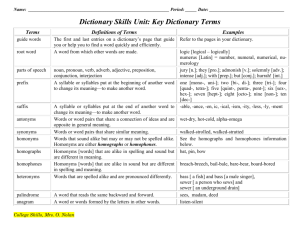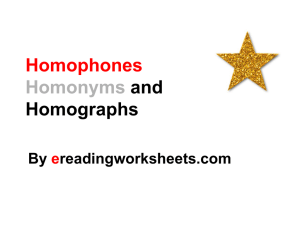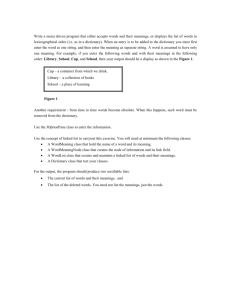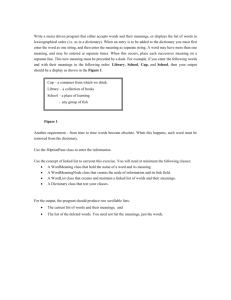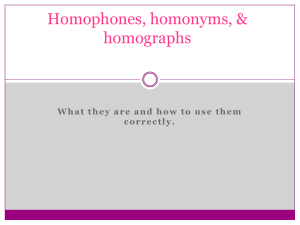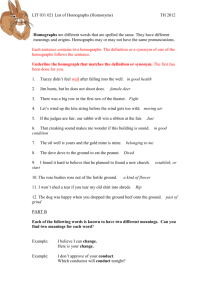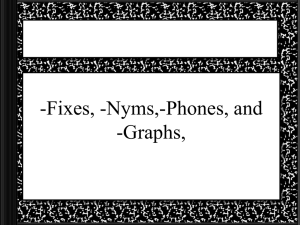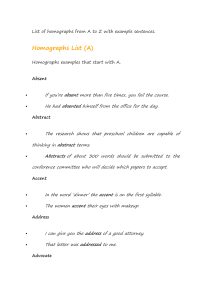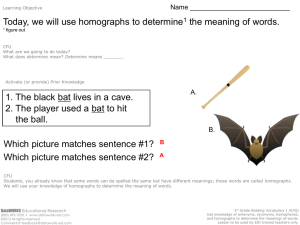2.3: Helping Others Lesson and Self
advertisement
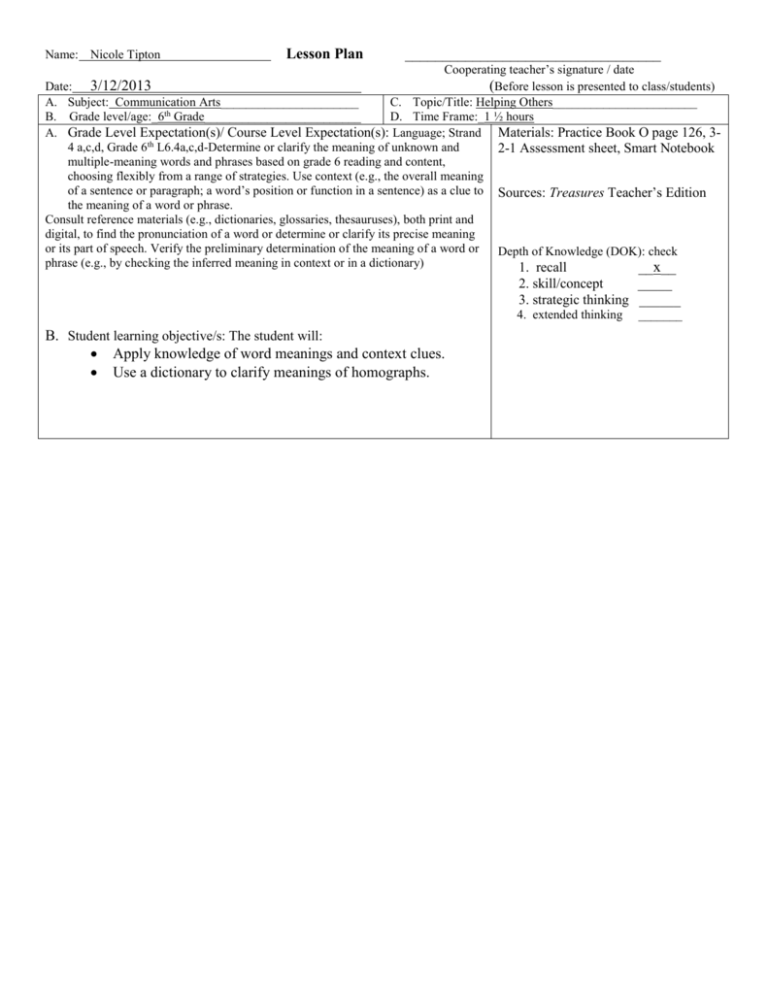
Name: Nicole Tipton Lesson Plan __________________________________ Cooperating teacher’s signature / date Date: 3/12/2013 (Before lesson is presented to class/students) A. Subject: Communication Arts______________________ C. Topic/Title: Helping Others_______________________ B. Grade level/age:_6th Grade_________________________ D. Time Frame:_1 ½ hours A. Grade Level Expectation(s)/ Course Level Expectation(s): Language; Strand Materials: Practice Book O page 126, 34 a,c,d, Grade 6th L6.4a,c,d-Determine or clarify the meaning of unknown and 2-1 Assessment sheet, Smart Notebook multiple-meaning words and phrases based on grade 6 reading and content, choosing flexibly from a range of strategies. Use context (e.g., the overall meaning of a sentence or paragraph; a word’s position or function in a sentence) as a clue to Sources: Treasures Teacher’s Edition the meaning of a word or phrase. Consult reference materials (e.g., dictionaries, glossaries, thesauruses), both print and digital, to find the pronunciation of a word or determine or clarify its precise meaning or its part of speech. Verify the preliminary determination of the meaning of a word or Depth of Knowledge (DOK): check phrase (e.g., by checking the inferred meaning in context or in a dictionary) 1. recall __x__ 2. skill/concept _____ 3. strategic thinking ______ 4. extended thinking B. Student learning objective/s: The student will: Apply knowledge of word meanings and context clues. Use a dictionary to clarify meanings of homographs. _______ THE LESSON: A. Opening: 1. Tell students to get out your reading books and turn to page 414. 2. Tell students that today we are going to be talking about Helping Others. Share that many people need help from others. Some of the biggest American charities are the American Cancer Society, Feed the Children, and Habitat for Humanity. Ask students if they can name any others. 3. Ask students what they can do to help people in need. 4. Ask for a volunteer to read the Talk About It on page 414. Ask students what they think the students in the photograph are doing. B. Explanation: (Please number components sequentially.) Model/demonstrate content/skills 1. Have students turn to page 416 in their book. 2. Have volunteers go to the Smart Board and match the vocabulary terms to the definition. Have students think of a sentence with the word in it. Ask questions to go along with each vocabulary word. (Moderate-describes something that is reasonable, not extreme; What is a synonym for moderate? Hamper-is to hold back or get in the way; When you get cold, what kinds of activities does it hamper? Prohibit-is to forbid, disallow, or ban; Why might a government decide to prohibit driving without a license? Accessible-if it is easily reached; What is a synonym for accessible?) 3. Ask students if they know what a homograph is. (Homographs are words that are spelled the same but have different meanings.) 4. Explain that homographs can be tricky and if they don’t understand the word, students may have to read both definitions in a dictionary and decide which makes more sense in context. 5. Have students look at the word moderate on page 416. Have students identify the part of speech for the word as used in the sentence. (adjective) Ask students to find in a dictionary a different meaning for the word. Remember before we said that moderate describes something that is reasonable, not extreme. (to preside over a meeting or discussion) C. Shared/interactive practice 1. Ask for volunteers to read a paragraph at a time from the story Talking with his Hands on page 416. 2. After the paragraph with hamper, ask a volunteer to look up hamper in the dictionary. Explain to them to find a homograph for the word. 3. Ask students if they can think of any homographs for these words from the story: pans, bored, palms, firm. Point out that all these words are also homonyms, or words that are spelled and pronounced the same, but have different meanings and usages. 4. Encourage students to use appropriate homonyms as well as synonyms and antonyms as they write and speak. 5. Continue reading the story. Independent practice/application 1. Tell students to get out their student practice book and turn to page 126. 2. Students will work quietly on worksheet. 3. The teacher will walk around the class helping students who need help and keeping students on task. 4. When students are finished with the worksheet pass out the 3-2-1 assessment sheet. 5. Explain to students to reflect back on the lesson about homonyms and write 3 things they learned from the lesson, 2 things they still want to know, and 1 opinion about the lesson they have. Evaluation: (Include one copy of each.) By teacher: The teacher will use questioning during the lesson to assess students’ ability to discover homonyms. The teacher will assess students’ ability to use a dictionary. The teacher will grade the worksheet to check for understanding of the lesson. Student self-evaluation of own learning: After completing the lesson students will fill out the 3-2-1 Assessment sheet to assess their understanding of the lesson. D. Closing: 1. Today we talked about helping others and charities and affiliations involved in helping others. Ask students if they can name any charities or affiliations we talked about. 2. While reading the text we talked about words that look and sound the same but have different meanings. Ask students what these are called. (homographs/homonyms) 3. Tell students that we also used the 3-2-1 Assessment to check our own understanding of the lesson. Through this assessment you are taking responsibility for your own learning. 4. It is now time for our first bathroom break; it is a girl’s day. Once everything is put away girls may line up at the door and then the boys. E. Differentiated Instruction: Place: Allow students to work in small groups within the classroom to allow for some one-onone with peers and teacher. Teacher can place students who exhibit knowledge of subject with those who may need more help. Respond: Give feedback to correct answers to let all students know why this is a good answer and give feedback for wrong answers to let students know why it is not a right answer. F. Lesson Reflection: (Complete on a separate page. See scoring guide for details.)

